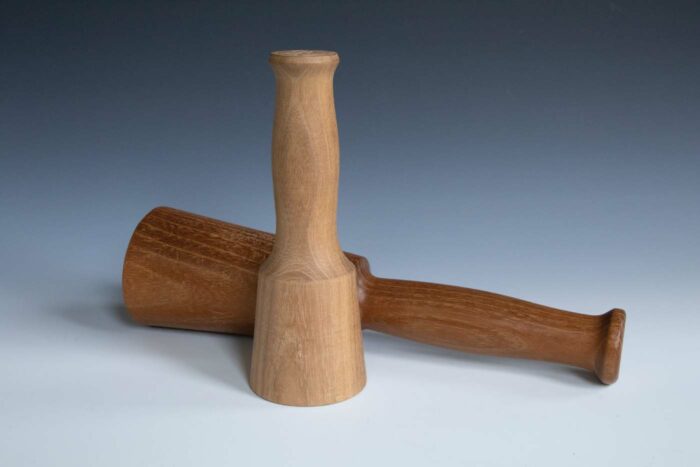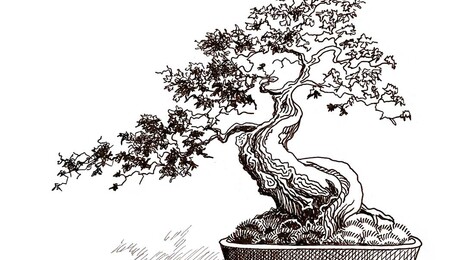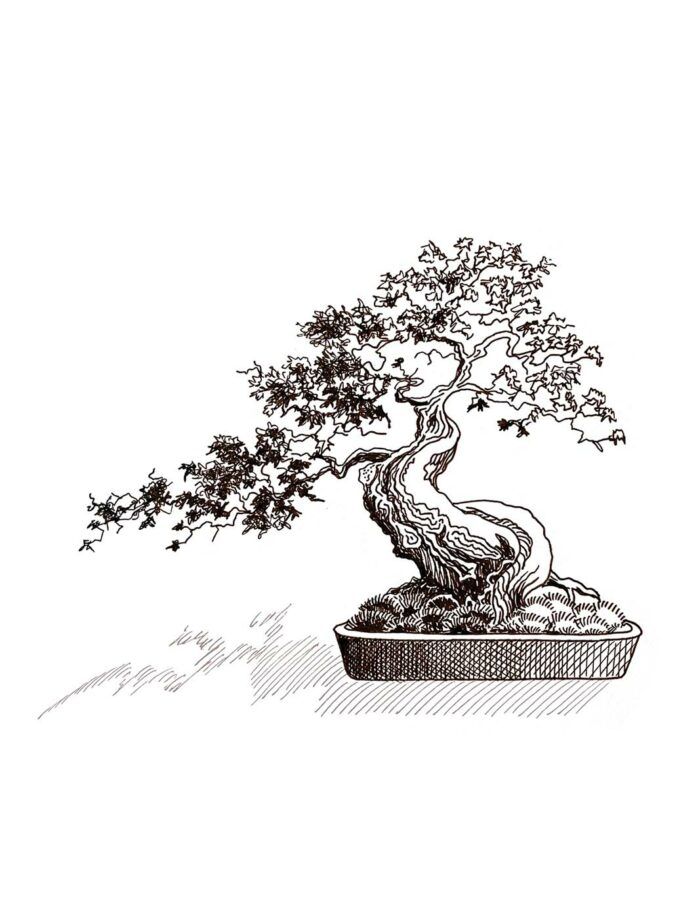In the summer of 1971, my new bride and I were on a tight-budget honeymoon, camping beside Wolf Creek, a woodland stream in Oregon. One morning, I noticed that the tree we had slept under was covered with seedpods, like small peas. It turned out to be a black locust tree, and before we left I collected many of the seeds.
The previous year I had completed a four-year hitch in the Navy and returned to the United States from three years being home-ported in Yokusaka, Japan. While there I had become enamored with Japanese culture and in particular with bonsai, the art of cultivating miniature trees. I had learned in Japan that bonsai are not special dwarf species, just regular trees grown in small pots and trimmed to stay small.

I was eager to try growing bonsai myself, and when we got home from our honeymoon, I planted those locust seeds in little pots on our apartment windowsill. The seeds were black with very hard shells, and as I learned in my go-to reference—The Woody Plant Seed Manual, published by the U.S. Forest Service—locust seeds require scarification in order to germinate. That explains locust trees’ penchant for living by streams; tumbling over rocks in the water apparently produces small injuries to the seeds’ hard shell casing, allowing water to penetrate. The manual suggested scraping the seeds over sandpaper to make them permeable to water. I did this, and the seeds germinated quickly.
A few years later, my wife and I bought some land and began building our home on it. A pole building in a forest, it’s something of a tree house, and building it was a time-consuming, long-term project. As a result, I no longer had the time to care for all my little potted trees, which required daily watering and other tending, so I temporarily planted them in the ground.

Years passed in a blur, and at some point I realized that my little locusts were too big to be put back into bonsai pots. So I left them in the ground next to our house, and they just kept growing—and growing.
Forty years later, my “bonsai” were approaching 50 feet in height. When one of them began leaning over dangerously, I cut it down and sawed it into lumber. I used my chainsaw to cut the trunk into manageable lengths and then to rip the logs in half. When I had pieces small enough to handle safely, I ran them through my 16-in. bandsaw, producing 9/4 planks. After a few years of air-drying, the honeymoon locust was ready to start a new life.
But what to make with it? Over the years, whenever I mentioned that I had some black locust timber, my listener would say something like, “Yeah, good for fence posts.” True, but I couldn’t bring myself to use it that way. One guy wanted to make new ribs for a vintage sailboat from my collection. That interested me, but I didn’t have enough to suit his project.
So far, I have made some carving mallets and other small tools, as well as a Moxon vise. Black locust is a dense hardwood, heavy and durable, a kind of old-brass yellow in color. Working it can be described as somewhat difficult. It can be hand-planed but demands a very sharp blade. Though probably not the best choice for a kitchen table, it does make great tools.
Not many woodworkers have the opportunity to follow their wood from flowerpot to sawn planks.
I consider it a great privilege to have had this chance.
Joe Scannell works wood in Novato, Calif.
Fine Woodworking Recommended Products

Suizan Japanese Pull Saw
A versatile saw that can be used for anything from kumiko to dovetails. Mike Pekovich recommends them as a woodworker’s first handsaw.
Sign up for eletters today and get the latest techniques and how-to from Fine Woodworking, plus special offers.


